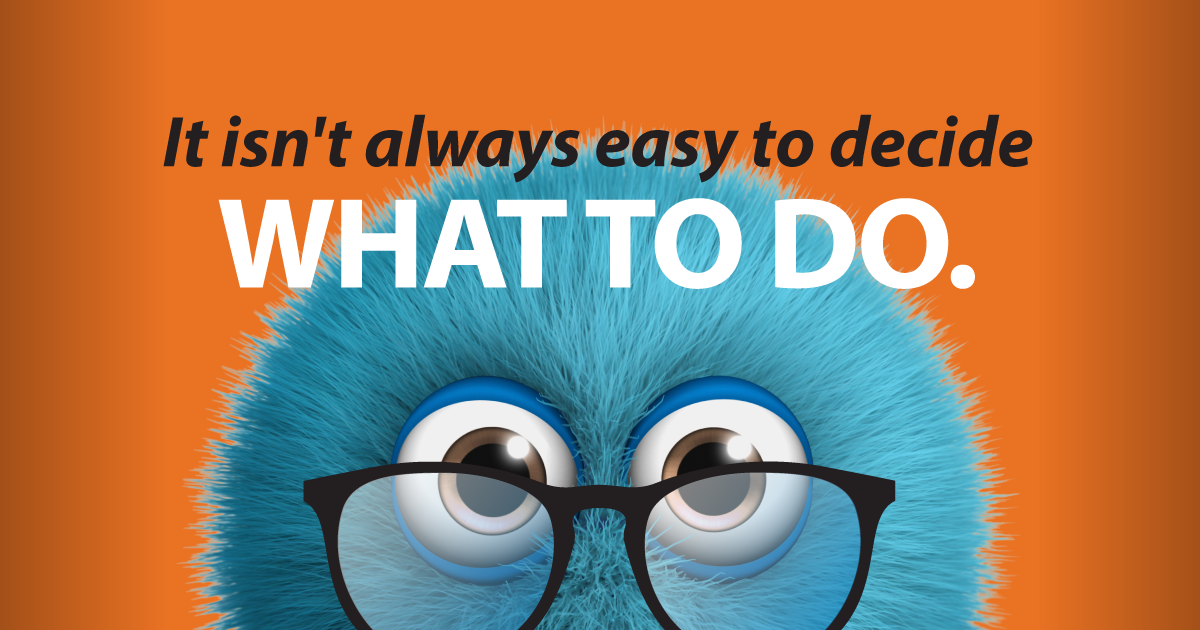
How to decide when to stop or push ahead
Marketing is an inexact process that sometimes takes a long time to pay dividends. Which might be why so many CFOs aren’t sure it’s worth the cost. Numbers People usually prefer to track a quick return on a specific investment, with digits they can show on a spreadsheet.
But marketing isn’t accounting.
That’s not to say that those in charge of marketing should be allowed to do and spend whatever they want. Marketing also needs to show results, and most people that are in charge of marketing feel that pressure to produce.
Unfortunately, that sometimes means giving up too fast on one campaign, or being reluctant to pull the plug on another.
How do you know when to push ahead?
Marketing takes patience, and allowing some campaigns to build can be a long-term win. Especially when you are trying to explain the benefits of using a credit union over a bank. And even when your loan promotion is starting to feel old to you, it is still new to your audience. They aren’t as tired of it as you are.
But when you’re expecting results, it’s hard to wait. You want to know right away if something is working or it isn’t. You want to see those numbers go up. You want to prove to the higher-ups that you were right about this creative approach. And you certainly don’t want to hit pause too early.
But if you aren’t seeing the results as quick as you expected, take a deep breath and a step back. Then, ask yourself these questions before you keep pushing:
Are the objectives and expectations realistic? Were the objectives and expectations set by prior results, or randomly picked out of the air? Is this a short-term campaign with a time limit, or is this campaign meant to bring in people over the long term?
Did I target the right audience for this product? Are you targeting specific ages or income levels? Did I pick the right media to reach the intended audience?
What small tweak can I make that will increase trackable results? Or, if there are a few optimizations that need to be made, can I spread them out over time so that I can test each one?
Once you can answer these questions without bias (which is tough, when you feel emotionally connected to the creative), then you will have the confidence to keep pushing ahead.
And how do you know when to stop?
There are several reasons why one campaign isn’t producing like you assumed it would. It could be a combination of things out of your control – such as a higher loan rate than your audience is used to, or a news event that you did not see coming.
But you definitely need to hit pause and rethink your approach whenever you see any of these occurring:
Your target audience isn’t responding. If you aren’t getting any interest from the people you targeted, then you may have misread what they want or need. If they don’t see your offer as something that will benefit them, then they won’t respond. “What’s In It for Me?” (WIIFM) is motivation on a primal scale, and if that benefit isn’t clear to your audience, then you need to make it obvious. Solve their problem. And help them reach their goal, not yours.
You’ve been running the campaign for a long, long, looong time. If your other campaigns are a success while this campaign continues to cost more than it brings in, then you probably need to do something about it.
You’ve tweaked it more than once and it still isn’t working. If sweetening the offer, refining the audience, or adding another media into the mix doesn’t improve results, then the campaign may need to go away. (Unless you did all of those things at once, of course. Then you have to figure out what might be holding it back.)
It isn’t always easy to decide what to do.
After all, you and your team have probably put a lot of time and effort into each campaign, and no one wants to see all that work go down the drain. So you keep pushing, trying new media and increasing frequency to see what helps.
But sometimes you really do need to stop and rethink things. After all, you only have so much budget for the year, and you need to be as cost-effective as you can.
- It’s hard not to get caught up in a buzz that surrounds you. - April 9, 2024
- Turn your staff into an Idea Factory. - February 27, 2024
- Move with the future or get left behind - February 6, 2024
